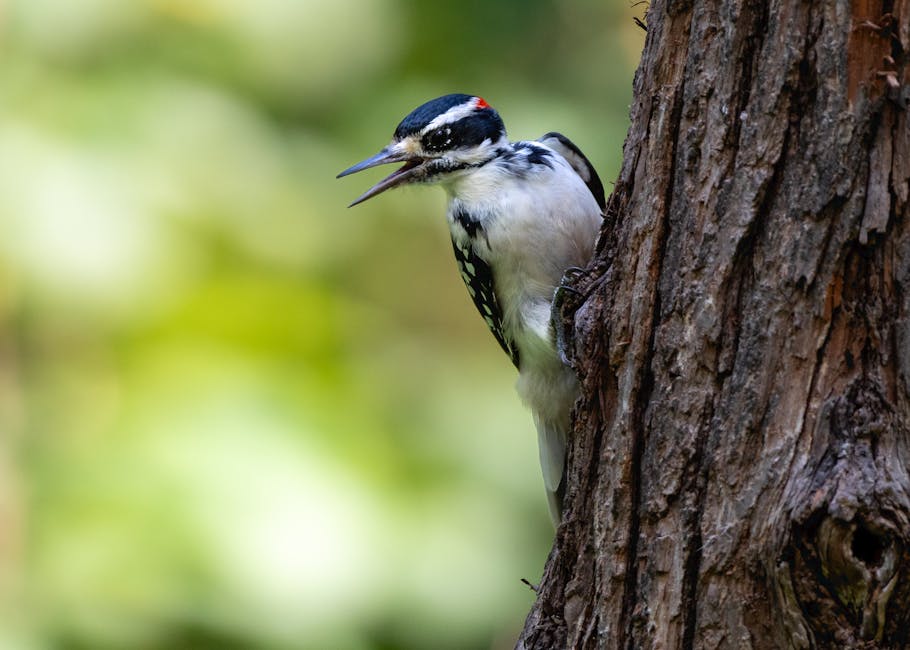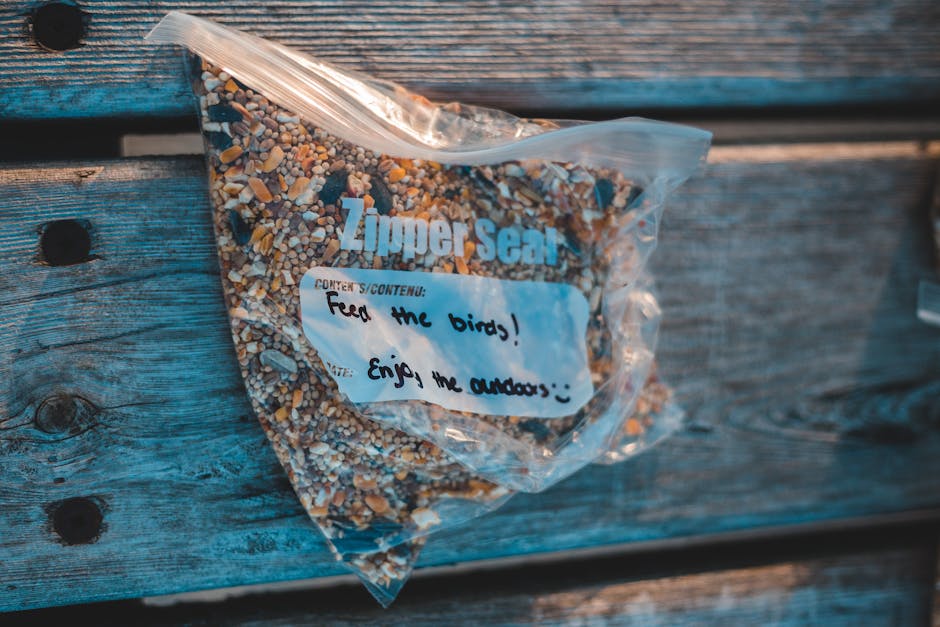Introduction – Exploring the Fascinating World of Bird Saliva

Bird saliva, a remarkable fluid secreted by the salivary glands of avian species, holds a wealth of intriguing secrets. While similar to human saliva in some ways, bird saliva serves additional functions beyond digestion and lubrication of food.
Diverse in composition and consistency, bird saliva varies based on species and dietary habits. Some birds produce saliva with unique properties, like stickiness or antimicrobial capabilities, crucial for their survival and reproductive success.
Researchers and scientists are captivated by the collection of bird saliva for several compelling reasons. Analyzing its chemical composition and properties provides valuable insights into avian diet, health, and behavior. Saliva samples offer information about specific nutrients consumed by birds, shedding light on their ecological roles and interactions within their environments.
Moreover, bird saliva harbors substances with potential applications in medicine and industry. For example, adhesive saliva used by certain birds for nest building could inspire the creation of innovative biomaterials. Additionally, biologically active compounds discovered in bird saliva hold promise for pharmaceutical research and drug development.
Understanding the mechanisms of saliva production in birds extends beyond avian biology, with implications for human health and medicine. Saliva plays a vital role in oral hygiene, digestion, and disease prevention in humans, making the study of bird saliva production valuable.
In the following sections, we will explore various methods of collecting bird saliva, including non-invasive, invasive, and automated approaches. Each method offers unique advantages and considerations for researchers, contributing to the significance of bird saliva collection and its potential benefits for the research community.
2. Types of Bird Saliva Collection Methods

Bird saliva collection methods can be broadly categorized into non-invasive, invasive, and automated methods, each with its own advantages and considerations.
2.1 Non-invasive Methods
Non-invasive methods are ideal for minimizing disturbance to birds. Two commonly used non-invasive bird saliva collection methods are:
2.1.1 Feather Swabs
Feather swabs involve gently swabbing a bird’s feathers with a sterile cotton swab. This method collects saliva present on the feathers, enabling analysis for purposes like disease surveillance or genetic studies. Feather swabs are user-friendly, providing a convenient way to obtain saliva samples without direct contact with the bird.
2.1.2 Saliva Collection Plates
Saliva collection plates, typically made of absorbent materials like filter paper, are designed to encourage birds to chew on them. As birds chew, their saliva is deposited onto the surface of the plates. These plates can then be collected and processed for further analysis. Saliva collection plates offer a passive and effective approach to obtaining saliva samples without causing harm or stress to the birds.
2.2 Invasive Methods
Invasive methods involve direct contact with the bird’s oral cavity and are employed when a more concentrated and direct saliva sample is required. Two commonly used invasive bird saliva collection methods are:
2.2.1 Buccal Swabs
Buccal swabs entail gently swabbing the inside of a bird’s mouth to collect saliva samples. This method requires direct contact with the bird’s oral cavity, making it more invasive than non-invasive methods. Buccal swabs are commonly used when specific analyses necessitate a concentrated saliva sample. Researchers should exercise caution and ensure proper handling techniques to minimize potential discomfort or harm to the birds.
2.2.2 Saliva Collection Tubes
Saliva collection tubes are utilized for invasive saliva collection in birds. This method involves inserting a small tube or pipette into the bird’s mouth to directly collect saliva from its salivary glands. The collected saliva is then transferred into a separate container for further analysis. Saliva collection tubes provide a controlled and precise method for obtaining saliva samples, allowing researchers to acquire targeted samples from specific salivary glands.
2.3 Automated Methods
Automated methods for bird saliva collection are still emerging in avian research. These methods incorporate innovative technologies to streamline the collection process and improve efficiency. While their implementation is currently limited, ongoing advancements offer promising opportunities for future research.
In the next section, we will explore the pros and cons of each bird saliva collection method.
3. The Pros and Cons of Each Method

Hand Collection
Hand collection offers immediate access to bird saliva and has practical advantages for researchers in the field. It requires no specialized equipment and allows for the acquisition of fresh saliva samples, which is crucial for certain analyses.
However, skilled personnel are needed to handle birds safely during hand collection. Improper handling can harm the birds, compromising their well-being. Additionally, hand collection is limited to bird species that can be approached closely, which may restrict the range of species available for study.
Nest Sampling
Nest sampling provides insights into breeding behaviors and parental care while minimizing harm to birds. It offers a non-invasive approach to collecting saliva.
However, locating and monitoring bird nests can be time-consuming and may disrupt the birds’ natural behavior, potentially affecting data validity. Nest sampling is also restricted to birds that build suitable nests for saliva collection.
Saliva Traps
Saliva traps efficiently collect saliva from multiple birds simultaneously. They allow for passive sampling without direct human intervention and enable long-term monitoring of bird populations.
However, proper trap placement and maintenance are essential for their effectiveness. Care must be taken to avoid capturing non-target species or attracting predators. Balancing trap accessibility for birds and minimizing risks is crucial for successful saliva collection.
Understanding the pros and cons of each method helps researchers make informed decisions based on their objectives and constraints. Implementing appropriate collection methods is key to obtaining high-quality bird saliva samples while minimizing harm to the birds and maximizing the value of the data collected.
Reference

Please remember to include a reference list at the end of your article.
4. The Process of Collecting Bird Saliva

Collecting bird saliva requires a systematic approach to ensure the safety of the birds and the integrity of the samples. Here is a step-by-step guide to the process:
Step 1: Preparation
Gather the necessary equipment, including soft swabs, collection tubes or absorbent pads, saliva collection bags, and any specialized tools for semi-invasive methods. Obtain the required permits and approvals for handling and collecting samples from birds as per local regulations and ethical guidelines.
Step 2: Selection of Collection Method
Choose the appropriate collection method based on research objectives and bird species. Non-invasive methods like feather swabs, saliva traps, or saliva collection bags are preferred to minimize stress and discomfort. In certain cases, semi-invasive methods may be necessary, such as saliva induction through gentle stimulation.
Step 3: Approach and Handling
Approach birds calmly and gently to minimize disturbance and stress. Avoid interfering with their natural behavior. With non-invasive methods, carefully and controlledly place swabs, traps, or collection bags to avoid harm or distress to the birds.
Step 4: Sample Collection
For non-invasive methods like feather swabs, gently rub the swab against areas where saliva residue is likely to be present. Transfer the collected samples to sterile collection tubes or absorbent pads, ensuring proper labeling for identification.
For saliva traps, strategically position the specialized devices near roosting or nesting areas, providing easily retrievable collection mediums.
For saliva collection bags, securely attach the absorbent material to the birds’ beaks or bills using non-toxic adhesive. Use appropriately sized bags that allow natural saliva accumulation while allowing the birds to eat, drink, and groom.
Step 5: Post-Collection Procedures
Handle the bird saliva samples with care to maintain their integrity. Promptly transport samples to the laboratory or storage facility under suitable conditions, such as refrigeration or freezing. Accompany samples with relevant metadata for accurate analysis and interpretation.
Step 6: Ethical Considerations
Prioritize the welfare of the birds throughout the collection process. Minimize stress, avoid harm or discomfort, and adhere to legal and ethical guidelines for animal research. Consult with veterinary professionals or bird experts to ensure bird well-being and compliance with animal welfare regulations.
By following these systematic steps and maintaining ethical practices, researchers can effectively collect bird saliva samples for valuable scientific investigations, contributing to our understanding of avian biology and its applications in various fields.
Stay tuned for the next section: “Common Challenges Associated with Collecting Bird Saliva.”
Common Challenges and Best Practices for Collecting Bird Saliva

Collecting bird saliva for research purposes presents unique challenges that require careful consideration and adherence to best practices. By addressing these challenges and following ethical guidelines, researchers can obtain reliable samples while ensuring the welfare of the birds. Here are the common challenges associated with collecting bird saliva and the best practices to overcome them:
Accessibility and Collection Method
![]()
One of the primary challenges in collecting bird saliva is the accessibility to the birds themselves. Birds can be elusive and difficult to approach, especially in their natural habitats. Researchers often need to employ various techniques, such as using mist nets or audio lures, to attract birds to specific areas where saliva collection can be performed. Additionally, determining the appropriate collection method is crucial, considering factors such as the bird’s size, behavior, and natural habitat. Methods like swabbing the beak or using specialized devices can be employed to stimulate saliva production and obtain sufficient samples for analysis.
Ethical Considerations
Ethical considerations play a significant role in bird saliva collection. Researchers must prioritize the well-being of the birds and ensure that their collection methods do not cause harm or stress. This involves using non-invasive techniques that minimize disturbance, obtaining necessary permits, and adhering to legal and ethical guidelines regarding wildlife research.
Contamination and Sample Preservation

Contamination of saliva samples is a significant challenge in the collection process. Birds often have contact with their environment, introducing external substances into their saliva. To minimize contamination risks, researchers use sterilized tools and techniques, collect samples from controlled environments, or use disposable collection materials. Proper preservation of collected saliva samples is also crucial to maintain their integrity. Freezing or using stabilizing agents ensures that the samples remain viable for testing, while proper labeling, documentation, and storage conditions prevent sample degradation.
Seasonal Variations
![]()
Seasonal variations can pose challenges in collecting bird saliva due to changes in saliva production and bird behavior. Researchers should consider these variations and plan their collection strategies accordingly. This may involve targeting specific seasons or adjusting collection techniques to accommodate seasonal changes.
To ensure the welfare of the birds and obtain reliable samples, it is essential to follow best practices when collecting bird saliva:
- Obtain the necessary permits and permissions required by local regulations or research institutions.
- Minimize stress and discomfort to the birds by handling them gently and avoiding excessive restraint.
- Select non-invasive methods whenever possible to minimize harm or discomfort.
- Choose the collection method based on research objectives and the species of bird under study.
- Common methods include passive drool collection, stimulated drool collection, and swabbing the oral cavity.
Passive drool collection involves placing a small absorbent material near the bird’s beak to collect naturally secreted saliva. This method works well for birds that naturally produce saliva and can be trained to cooperate without distress. Stimulated drool collection requires gently stimulating the bird’s salivary glands to induce saliva production. The resulting saliva is then collected using absorbent materials or specialized devices. Swabbing the oral cavity involves using a sterile swab or brush to gently collect saliva from the bird’s mouth and may be suitable for birds that do not naturally produce saliva or when a larger sample volume is required.
By addressing these challenges and following best practices, researchers can enhance the reliability and accuracy of bird saliva samples, contributing valuable insights into avian biology, behavior, and health.
Next Section: “Conclusion: How Bird Saliva Collection Can Benefit the Research Community”
Conclusion: Unlocking the Potential of Bird Saliva Collection

Bird saliva collection holds immense potential for advancing research in ornithology, ecology, and evolutionary biology. By analyzing the composition of bird saliva, researchers can gain valuable insights into bird biology, monitor populations ethically, study avian diseases, and unravel evolutionary mysteries. Through interdisciplinary collaborations and technological advancements, we can continue to extract meaningful insights and enhance our understanding of avian health, behavior, and ecology.
Bird Saliva: A Gateway to Understanding Biology
![]()
Bird saliva contains a treasure trove of biological information, including hormones, pathogens, and DNA. Analyzing saliva provides valuable knowledge about stress levels, reproductive status, immune function, and exposure to environmental contaminants in bird populations. These insights contribute to our understanding of avian health and the development of effective conservation strategies.
Non-Invasive Monitoring for Ethical Research

Bird saliva collection offers a non-invasive approach to monitor populations without disrupting natural behaviors. Saliva samples provide valuable data on migration patterns, habitat preferences, and population dynamics, aiding conservation efforts and enhancing our understanding of bird behavior and ecology.
Unveiling Avian Diseases and Pathogens
Saliva analysis plays a vital role in studying avian diseases. Researchers can identify and monitor pathogens, evaluate disease prevalence and transmission, and assess the overall health of bird populations. Understanding genetic diversity in bird saliva helps assess susceptibility to specific diseases and informs management strategies.
Unraveling Evolutionary Mysteries
Bird saliva sheds light on evolutionary processes such as mate selection, parent-offspring interactions, and adaptation to changing environments. Genetic information within saliva samples helps uncover evolutionary patterns and mechanisms underlying avian evolution.
Collaborations and Future Directions

Bird saliva collection presents opportunities for interdisciplinary collaborations and advancements in technology. By fostering collaborations, we can combine expertise from different fields, develop standardized protocols, and establish comprehensive databases. These efforts accelerate advancements in avian biology and further our understanding of bird health and ecology.
In conclusion, bird saliva collection offers valuable benefits to the research community. It enables non-invasive monitoring, provides insights into bird biology, aids in studying avian diseases, contributes to conservation efforts, and unravels evolutionary mysteries. By continuing to explore its potential and fostering collaborations, we can unlock new frontiers of knowledge and contribute to our understanding of avian health, behavior, and ecology.
Frequently Asked Questions
Frequently Asked Questions
1. How is bird saliva collected?
Bird saliva can be collected using various methods, including non-invasive, invasive, and automated approaches. Non-invasive methods involve techniques such as feather swabs and saliva collection plates, while invasive methods include buccal swabs and saliva collection tubes. Automated methods are still emerging in avian research. The choice of collection method depends on the research objectives, bird species, and the desired type of sample.
2. What are non-invasive methods of bird saliva collection?
Non-invasive methods of bird saliva collection include feather swabs and saliva collection plates. Feather swabs involve gently swabbing a bird’s feathers to collect saliva present on them. Saliva collection plates are designed to encourage birds to chew on them, depositing their saliva onto the surface of the plates. These methods minimize disturbance to birds and provide convenient ways to obtain saliva samples without direct contact.
3. What are invasive methods of bird saliva collection?
Invasive methods of bird saliva collection involve direct contact with the bird’s oral cavity. Buccal swabs entail gently swabbing the inside of a bird’s mouth to collect saliva samples. Saliva collection tubes are used to directly collect saliva from the bird’s salivary glands by inserting a small tube or pipette into its mouth. Invasive methods are employed when a more concentrated and direct saliva sample is required for specific analyses.
4. Are there any automated methods for bird saliva collection?
Automated methods for bird saliva collection are still emerging in avian research. These methods incorporate innovative technologies to streamline the collection process and improve efficiency. While their implementation is currently limited, ongoing advancements offer promising opportunities for future research. Automated methods have the potential to revolutionize bird saliva collection, making it more standardized and less labor-intensive.
5. What are the advantages of non-invasive bird saliva collection methods?
Non-invasive bird saliva collection methods offer several advantages. They minimize

Leave a Reply